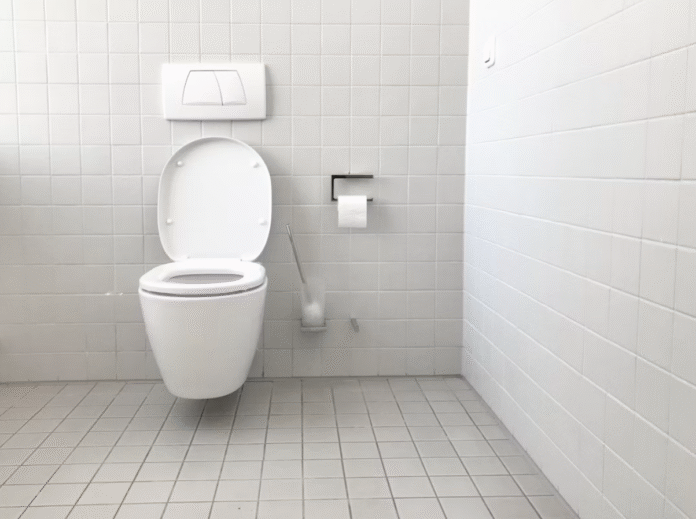Toilet Seat Disease Risk: 7 Shocking Facts You Must Know Today
When you enter a public restroom, sit down on seat, and wonder about germs, you’ve probably asked yourself: What is the real toilet seat disease risk ? Many people worry about catching infections from bathrooms, but is this fear actually justified?
Health experts and microbiologists have studied this question for decades, and their findings might surprise you. While bathrooms are undeniably filled with microbes, not every surface poses the same danger. The truth is both reassuring and unsettling at the same time.
In this article, we’ll break down the myths, the science, and the practical steps you can take to stay safe without losing sleep every time you use a public toilet.
1. The Myths About Toilet Seat Disease Risk
One of the biggest fears people have is that they could catch sexually transmitted diseases (STDs) from a toilet seat. But according to Dr. Jill Roberts, professor of microbiology at the University of South Florida, the risk is “vanishingly low.”
Most viruses and bacteria that cause STDs like gonorrhea or chlamydia cannot survive long on cold, hard surfaces. For them to infect you, fresh bodily fluids would need to transfer almost immediately, which is extremely unlikely.
Similarly, bloodborne diseases and urinary tract infections (UTIs) aren’t easily spread this way. Unless someone left visible contamination (which most of us would avoid anyway), the chances of catching them from a seat are close to zero.
2. The Exceptions You Should Know
Although most germs die quickly, a few viruses are tougher. Human papillomavirus (HPV), the virus behind genital warts, can survive on surfaces for days or even a week. However, infection through toilet seats still requires broken skin in the genital area, which makes transmission rare.
Another potential though unlikely risk is herpes during an active outbreak. But again, broken skin and weakened immunity would be needed for infection.
3. Should You Use Toilet Paper Covers?
Many people drape toilet paper across the seat or squat above it. According to surveys, around half of Americans line public seats this way. Unfortunately, this strategy doesn’t really help.
Toilet paper is porous, meaning germs can pass through. Squatting, on the other hand, may actually increase health risks, especially for women. Contracting pelvic muscles while hovering can prevent full emptying of the bladder, sometimes leading to UTIs.
So ironically, the very methods people use to avoid toilet seat disease risk might do more harm than good.

4. Where the Real Toilet Seat Disease Risk Lies
The surprising truth is that the real problem isn’t the seat itself, it’s your hands.
Every time you touch bathroom surfaces like flush handles, stall doors, or sink taps, you risk picking up harmful microbes such as E. coli, Salmonella, Shigella, or norovirus. When you later touch your mouth or food, you can easily infect yourself.
Norovirus, in particular, is extremely contagious. Just 10 viral particles can make you sick, and it can survive on surfaces for up to two months. Studies show bathrooms are hotspots for its spread.
5. Beware of the “Toilet Plume”
Have you ever heard of the toilet sneeze? Every flush propels tiny droplets of water, urine, and fecal matter into the air. These particles can settle on surfaces, including your clothes and skin.
According to research from the University of Arizona, around 40–60% of particles can become airborne during flushing. Some pathogens, like Clostridium difficile, can even float in spore form and remain infectious for long periods.
That means everything from toilet lids to sink handles and even the floor could be contaminated. In fact, microbiologist Charles Gerba argues the floor is the germiest surface in any public restroom.
6. Home Toilets vs. Public Restrooms
You might think your home bathroom is safer, but think again. Research by Gerba found that most home bathrooms are germier than public ones because people don’t clean them as often.
Public restrooms are usually cleaned several times a day, while home bathrooms may only be scrubbed once a week. His lab recommends a cleaning schedule of once every three days to keep bacteria under control.

So paradoxically, sitting in a public restroom might expose you t o fewer pathogens than sitting at home.
7. How to Protect Yourself from Toilet Seat Disease Risk
Here are some simple but effective ways to reduce your risk:
-
Wash your hands properly for at least 20 seconds with soap and water after every bathroom visit.
-
Use hand sanitizer afterward for extra protection.
-
Avoid touching your face until your hands are clean.
-
Flush and step away quickly to avoid exposure to toilet plumes.
-
Don’t use your phone in the stall, it can pick up airborne germs and spread them elsewhere.
-
Keep your bathroom at home clean every three days, focusing on handles, faucets, and surfaces.
-
If possible, use touchless fixtures like automatic flushes and faucets.
These small habits can go a long way in preventing illness.
Final Thoughts
The fear of catching a disease from a toilet seat has been around for decades, but the reality is less scary. While bathrooms are full of germs, the toilet seat disease risk is extremely low compared to other surfaces.
The real danger lies in unwashed hands, contaminated surfaces, and airborne particles from flushing. With good hygiene practices, the risk of infection from public restrooms becomes minimal.

So the next time you hesitate before sitting down, remember: your hands are the true carriers, not the seat beneath you.

